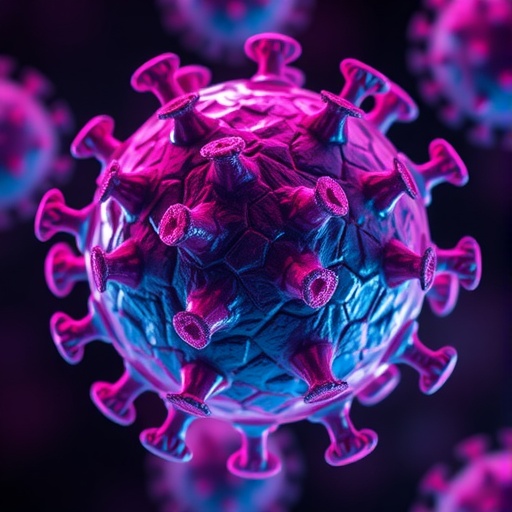A remarkable advancement has emerged in the field of neurology and medical engineering, with recent research introducing a groundbreaking predictive model aimed at improving prognostic outcomes for patients suffering from acute ischemic stroke. This model, known as StrokeENDPredictor-19, has been engineered to enhance the accuracy of predictions related to patient recovery, paving the way for more tailored treatment plans and enhanced patient care. The innovative features of this model are set to revolutionize the way healthcare professionals approach stroke management and rehabilitation.
Stroke, a leading cause of death and disability worldwide, often leaves survivors grappling with significant long-term impairments. The ability to accurately assess the potential for recovery from an acute ischemic stroke is paramount, and existing models have demonstrated limited efficacy in capturing the complex variables influencing patient outcomes. The researchers, spearheaded by Li et al., recognized a crucial gap in predictive accuracy and responsiveness to clinical changes, at which point they embarked on developing a new approach with StrokeENDPredictor-19. This new model is distinguished by its integration of advanced data analytics and machine learning techniques.
One of the central features of StrokeENDPredictor-19 is its utilization of a multidimensional dataset that includes clinical variables, demographic information, and biological markers. This expansive dataset allows for a comprehensive analysis of the numerous factors that can influence recovery trajectories after a stroke. Moreover, the model incorporates real-time data inputs that facilitate immediate adjustments to predictions based on the patient’s evolving clinical status. In contrast to traditional models, which often rely on static data, this adaptive approach enables healthcare providers to implement timely interventions.
The researchers have meticulously developed and validated the StrokeENDPredictor-19 through a robust methodology that includes diverse cohorts of stroke patients. By employing machine learning algorithms, the model was trained to identify patterns within vast datasets, leading to improved accuracy in forecasting outcomes. The results have proven promising, demonstrating significant enhancements in predictive performance over previous models. This is critical for health professionals as it aids in making informed decisions regarding treatment modalities and potential rehabilitation strategies.
In addition to its predictive capabilities, StrokeENDPredictor-19 emphasizes user-friendliness, ensuring that clinicians can easily implement the model within their daily practices. The integration of the model into existing clinical workflows is designed to be straightforward, reducing the barriers to its adoption. This accessibility is critical, as it encourages widespread use of the model among healthcare providers, ultimately benefitting a larger population of stroke patients.
The implications of this research extend far beyond mere statistics; the model significantly enhances the potential for individualized patient care. With precise predictions regarding recovery likelihood, healthcare teams can tailor rehabilitation programs. For instance, patients identified as having a higher probability of successful recovery can engage in more intensive physical therapy, while others may receive specialized care aimed at managing long-term disabilities.
Family involvement in the rehabilitation process also stands to benefit from this predictive model. As families often play a crucial role in patient recovery, the insights provided by StrokeENDPredictor-19 can help families set expectations and develop supportive strategies aligned with clinical recommendations. Improved communication between healthcare providers, patients, and their families fosters a more collaborative environment that enhances recovery outcomes.
Moreover, StrokeENDPredictor-19 represents a hallmark achievement in the growing field of predictive analytics in healthcare, signifying the shift from reactive to proactive patient management. By leveraging artificial intelligence and advanced data science, researchers have managed to bridge critical gaps in our understanding of neurological recovery. The potential applications go far beyond strokes, hinting at a future where similar models could be developed for other complex medical conditions where variables influence patient outcomes.
Despite the promising advancements, researchers acknowledge potential challenges associated with the implementation of StrokeENDPredictor-19 in real-world scenarios. Hospital infrastructure, access to necessary data, and provider training are among the factors that could influence adoption rates. Addressing these challenges will be crucial for ensuring that the model reaches its intended audience and achieves its goal of improving patient prognoses.
Collaboration between researchers, healthcare systems, and technology developers will be key in overcoming obstacles. Investment in infrastructure to support the necessary data collection and model integration is essential for maximizing the benefits of StrokeENDPredictor-19. Additionally, ongoing education for medical professionals will empower them to effectively utilize these predictive tools, enhancing their decision-making processes in acute care settings.
As the StrokeENDPredictor-19 model continues to be refined and tested, researchers remain hopeful for its potential to create substantive changes in stroke care practices. The model embodies an urgent response to a pressing medical need, transforming our approach to stroke management and rehabilitation. The pursuit of enhancing patient outcomes in acute ischemic stroke is a commendable endeavor, and the development of such predictive models represents a significant step forward in that journey.
The accessibility of this predictive model is an urgent necessity in today’s healthcare landscape, as patient-centered care continues to take precedence. The development of StrokeENDPredictor-19 reflects a broader trend towards utilizing data and technology to inform clinical decisions, ultimately improving recovery paths for patients. The undeniable synergy between data science and medical practice delineates a future that prioritizes health optimization through precise, informed interventions.
In conclusion, the StrokeENDPredictor-19 initiative encapsulates the pinnacle of contemporary research in neurology and biomedical engineering. Its innovative design and potential to dramatically enhance predictive accuracy in acute ischemic stroke prognosis inspire a new chapter in medical practice that could greatly benefit countless patients. As researchers push forward with further developments and validations, the hope remains that full integration into clinical settings will occur swiftly, ushering in an era of unprecedented care for stroke survivors.
Subject of Research: Development of a predictive model for prognosis in acute ischemic stroke.
Article Title: StrokeENDPredictor-19: Setting New Prediction Model in Neurological Prognosis in Acute Ischemic Stroke.
Article References:
Li, L., Li, H., Jiang, M. et al. StrokeENDPredictor-19: Setting New Prediction Model in Neurological Prognosis in Acute Ischemic Stroke.
Ann Biomed Eng (2025). https://doi.org/10.1007/s10439-025-03838-4
Image Credits: AI Generated
DOI: 10.1007/s10439-025-03838-4
Keywords: predictive modeling, acute ischemic stroke, prognosis, healthcare analytics, machine learning.
Tags: acute ischemic stroke recoveryadvanced data analytics in neurologybiological markers for stroke prognosisclinical variables in stroke assessmentdemographic factors in stroke recoveryimproving stroke rehabilitation outcomesmachine learning in stroke managementpredictive accuracy in healthcarerevolutionizing stroke care practicesStroke prognosis prediction modelStrokeENDPredictor-19 featurestailored treatment plans for stroke patients





